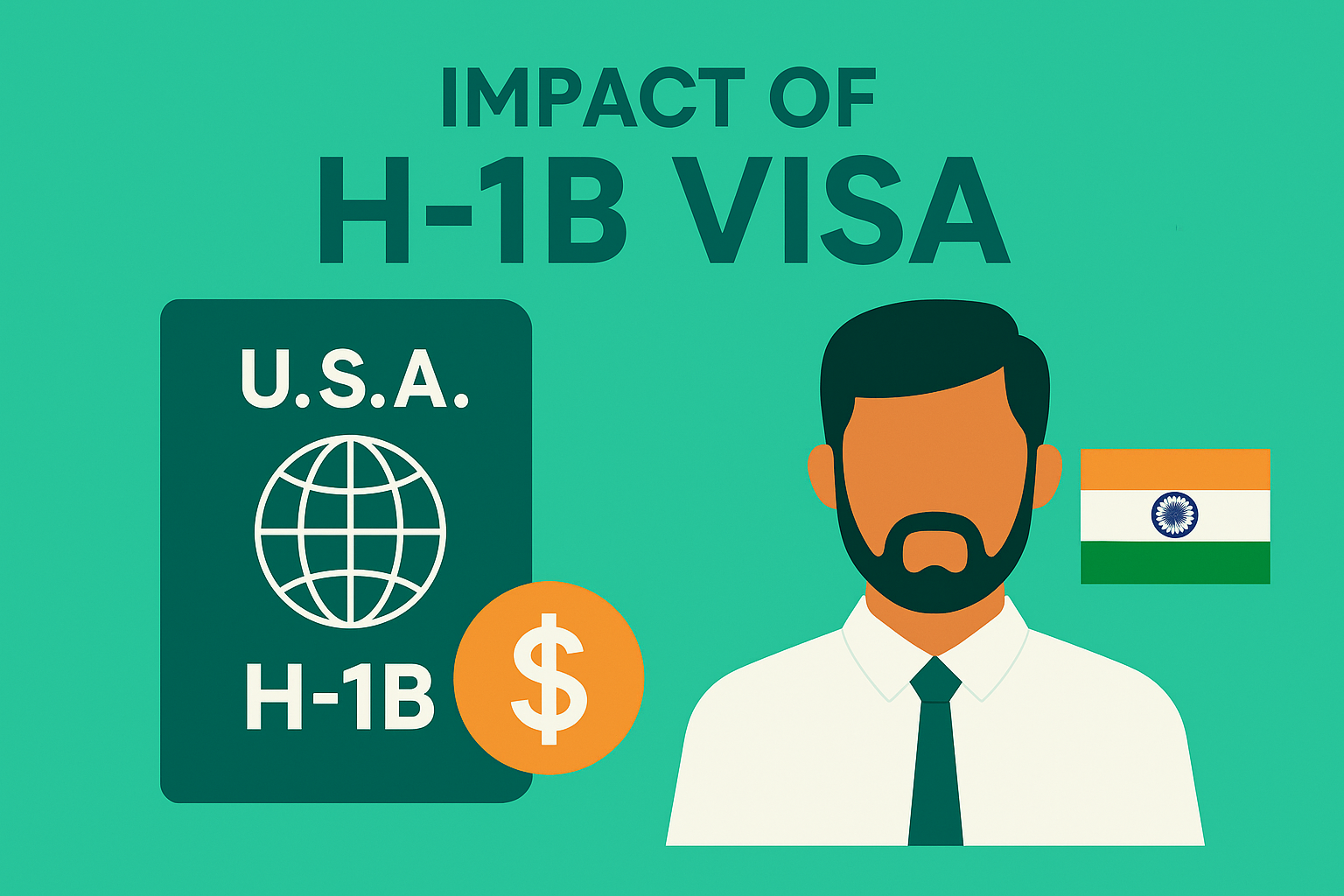Wrote by : Global Economist
Introduction
In September 2025, the U.S. administration announced plans to introduce a $100,000 fee on new H-1B visa petitions, sparking significant concern in global labor markets. (Reuters)
This potential reform particularly affects India, which accounts for the majority of H-1B beneficiaries in the U.S. tech and services sectors. This article analyzes the possible consequences for Indian professionals, companies, and the broader economy.
Background and Recent Developments
H-1B and India’s Heavy Reliance
- As of 2024, 71% of H-1B approvals went to Indian nationals, underscoring the program’s role in supporting Indian IT exports and talent mobility. (Reuters)
- Indian IT firms have built their global delivery models on a mix of onshore H-1B workers and offshore teams in India.
The Proposed Policy Changes
- The Trump administration is considering a $100,000 one-time fee for each new H-1B visa petition, while renewals for existing visa holders may remain exempt. (Reuters)
- A proposed overhaul of the lottery system would favor higher-wage, higher-skilled applicants, reducing chances for younger or entry-level workers. (Reuters)
- India’s IT industry association NASCOM warned that sudden policy shocks could disrupt service delivery models. (Reuters)
- The Indian government raised concerns about impacts on families and remittance flows. (Reuters)
- Confusion has already emerged, with some visa holders abroad rushing back to the U.S. to avoid disruptions. (Reuters)
- U.S. lawmakers have also questioned major tech firms about why they continue hiring H-1B workers amid layoffs. (Reuters)
Key Impacts on Indian Talent and Industry
| Area | Main Effects | Risks & Considerations |
|---|---|---|
| Career Mobility | The steep $100k fee could discourage young professionals from pursuing U.S. opportunities. Many Indian students are now reconsidering the “American Dream.” (Reuters) | Renewals may be exempt, but uncertainty could undermine long-term planning. |
| Corporate Sponsorship | Companies will likely sponsor fewer H-1Bs, focusing only on critical roles. Offshore delivery centers (GCCs) in India may expand. (Reuters) | Startups and SMEs may be hit hardest due to limited budgets. |
| Project Design | Contracts may be structured to rely more heavily on offshore teams from the start, reducing on-site requirements. | Client contracts with mandatory on-site presence may need renegotiation, creating delivery risks. |
| Profitability & Valuations | Indian IT firms lost nearly $10 billion in market value immediately after the announcement. (Reuters) | Long-term impact will depend on diversification and contract structures. |
| Remittances & FX | Fewer workers in the U.S. could reduce remittances to India. The Indian rupee hit an all-time low following the visa fee news. (Reuters) | Offshore contracts and remote models may partly offset lost inflows. |
| Student Flows | Indian students are exploring alternatives such as the UK, Canada, and Australia. | This could weaken India’s exposure to global networks in the long term. |
Strategic Responses for India and Its Professionals
Short- to Medium-Term
- Diversify Pathways: Explore alternatives to H-1B (O-1, L-1, permanent residency routes).
- Offshore First Models: Build delivery models with India at the core, using U.S. roles only for strategic positions.
- Skill Differentiation: Focus on cutting-edge fields (AI, quantum computing, cybersecurity) to secure higher-priority visas.
- Investor Communications: Indian IT firms must guide markets by stress-testing revenues against policy scenarios.
- Remittance Alternatives: Encourage capital inflows via investment, equity, and remote contract earnings, beyond remittances.
Longer-Term
- Bilateral Negotiations: Secure exceptions or quotas for Indian talent in future visa reforms.
- Strengthen Domestic Innovation: Expand funding for startups, R&D, and university-industry collaboration.
- Compliance Leadership: Enhance international standards (ISO, SOC2) to position India as a reliable global IT partner.
Conclusion
The proposed $100,000 H-1B visa fee represents a structural turning point for India’s IT talent and global mobility.
- In the short term, it risks reducing U.S. migration, disrupting service delivery, and weakening remittance flows.
- In the longer term, however, it may accelerate India’s “offshore-first” growth model, driving innovation and deepening its domestic talent base.
For Indian professionals and companies alike, the challenge will be to adapt swiftly, diversify strategies, and leverage this disruption as an opportunity for long-term resilience.


